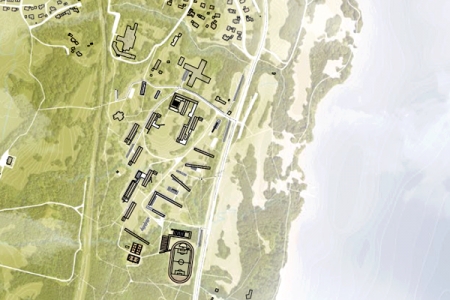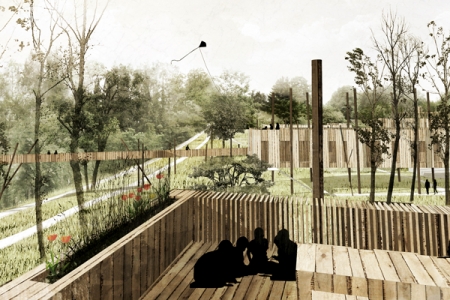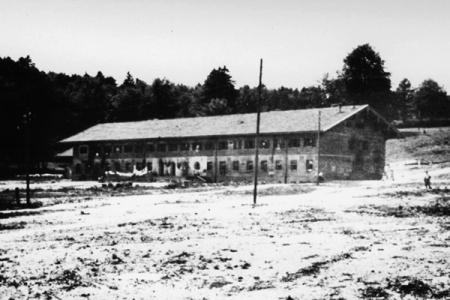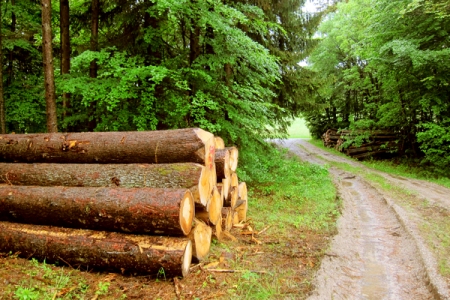The Magic Park of Feldafing
Feldafing (DE) – Runner-up
TEAM DATA
Team Representative: F. Javier Castellano Pulido (ES) – architect; Associates: Sergio Álvarez García (ES), Paloma Baquero Masats (ES), Tomás García Píriz (ES), Juan Antonio Serrano García (ES) – architects
Calle San Jerónimo 17, 18005 Granada– España
+34 651 163 614 – www.cuacarquitectura.com – www.serranoybaquero.com
See the complete listing of portraits here
See the site page here

J. A. Serrano García, P. Baquero Masats, T. García Píriz, F. J. Castellano Pulido & S. Álvarez García
INTERVIEW
Click on the images to enlarge
1. How did you form the team for the competition?
We are two different offices –CUAC Arquitectura and Serrano+Baquero Arquitectos– yet living in the same small city, Granada. Our geographical and conceptual proximity allow us to share several projects.
2. How do you define the main issue of your project, and how did you answer on this session main topic: Adaptability through Self-Organization, Sharing and/or Project (Process)?
From our point of view, the great success of this proposal lies in having found a natural way to a respectful incorporation in the history of a strong cultural, ecological and social landscape. In this sense, the project is very close to the working lines set by Europan 13.
3. How did this issue and the questions raised by the site mutation meet?
The complexity of this place is linked to intricate overlapping historical layers. Traces of heterogeneous and different activities that have marked this space have also determined the disjointed situation in which is it today: closed, semi-abandoned and isolated... However, each of the stages has contributed to the definition of a special atmosphere. Our project intervenes on the site by consolidating and recycling the main elements of the citated atmosphere: the forest, the old and new buildings, the lake views, the contact with Lenne Park, the paths. In this sense, the project did not emerge from a “happy idea” but to establish a balanced dialogue between the different elements. The flexibility of the scheme allows a simple and progressive implementation with a high capacity for change.
4. Have you treated this issue previously? What were the reference projects that inspired yours?
This concept is not strange to us. It is actually an idea with which we usually work on a regular basis. We could mention many of our projects addressing with this topic in some way – “Rurban Geology” in San Bartolomé (ES), “Nieuw Water Garden” in Leeuwarden (NL) or “Wood de Travers” in Couvet (CH) are three good examples.
5. Today –at the era of economic crisis and sustainability– the urban-architectural project should reconsider its production method in time; how did you integrate this issue in your project?
For us, on this topic, we consider the place in all its complexity as a map plenty full of information, vectors of pre-existences and potentialities. The territory or landscape in a programmatic, cultural, physical or ecological way is unique… Find the specific clues that lie onto the place is the aim for a successful architectural.
6. Is it the first time you have been awarded a prize at Europan? How could this help you in your professional career?
It is not our first Europan competition, in fact we have been awarded three other times (we have already mentioned them): 1st Prize in Leeuwarden (NL); 1st Prize in San Bartolomé (ES), both in Europan 11; and Runner-up in Couvet (CH) in Europan 12. Years ago we really had expectations on them… Now, 5 years after, we are still waiting...








